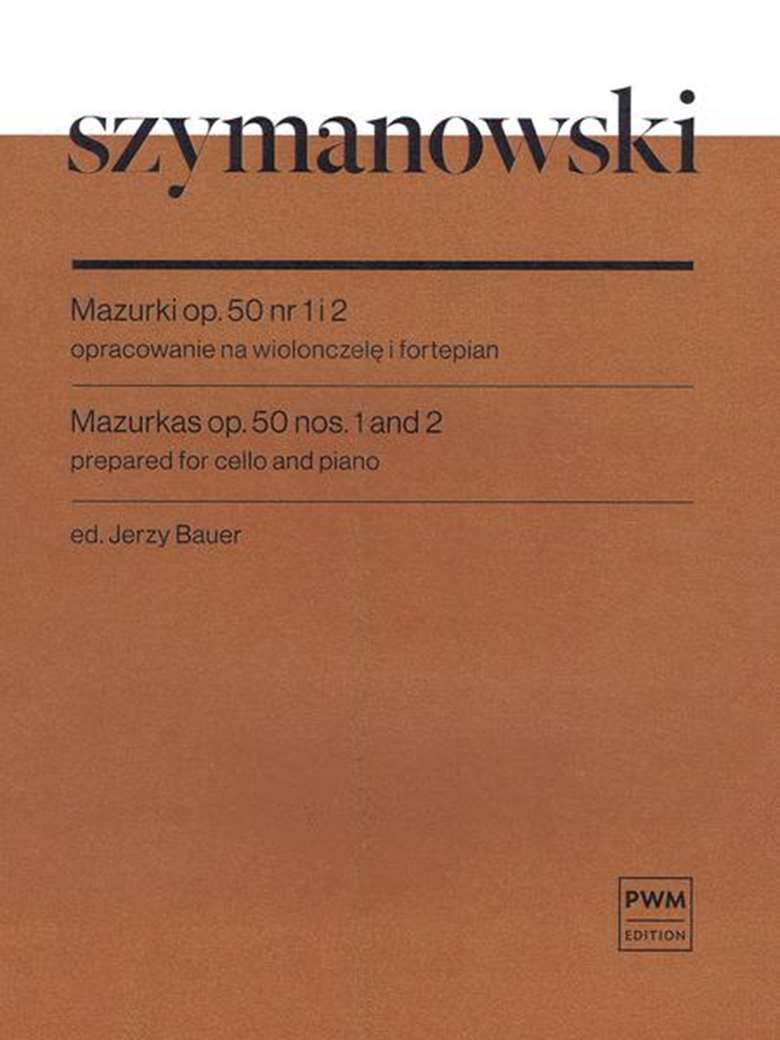Cello Sheet Music Reviews: Szymanowski
Helen Neilson
Sunday, September 1, 2019
Helen Neilson reviews Szymanowski's Mazurka op. 50 Nos. 1 and 2, Prepared for Cello and Piano, edited by Jerzy Bauer and published by PWM Edition.

This pair of Szymanowski mazurkas, originally written for solo piano have been arranged for cello and piano by Jerzy Bauer in collaboration with cellist Bartosz Koziak. The composer himself never wrote anything for the cello and, when asked to do so by Kazimierez Wilkomirski, said: ‘Well sir, I do not feel the cello’. However, several of his compositions have now been transcribed for cello due to growing demand. Simon Rattle referred to him as ‘one of the greatest composers of the 20th century’. His work drew upon Wagner, Richard Strauss, Reger, Scriabin, Debussy, Ravel and Chopin as well as from his native folk music.
These two pieces are approachable for advanced students, or would sit well in recital programmes by professionals or serious amateurs alike. They could be programmed independently or performed as a pair.
Szymanowski completed his set of 20 Mazurkas for piano between 1924 and 1926 during his third period, which was largely influenced by the music of the Polish Górale people who were ‘Highlanders’ largely found in their traditional area of southern Poland. This music was often played on two fiddles and a string bass. In a published article he said: ‘My discovery of the essential beauty of Górale music, dance and architecture is a very personal one; much of this beauty I have absorbed into my innermost soul.’ He combines the elements of folk music here with a masterly stylisation using a vast range of techniques of modern musical language. The Polish traditional form of the mazurka originated in the Polish region of Mazrovia, near Warsaw, being a dance in triple time with an emphasis on the second or third beat.
In the first, which is based upon a Podhale song, the piano version has a clear melodic line, much of which is taken here by the cello, so the majority of the time the cellist is the leading line. There are, however, a few places where the pianist takes the lead and the cellist is an accompanying voice, so the player would be well advised to acquaint themselves with the original version in order to understand the voicings. In the second, the rhythm of the song's initiation is combined with the strong movement of a highland dance. This is a lively and energetic piece, offering a range of colour and requiring a dramatic energy. There is more dialogue of the melodic line between cello and piano here, and moments of doubling in climactic moments. The cello ends with a quieter pizzicato passage before a unified sforzando final chord.

